12 Best Indoor Plants for Mold Control | Naturally Purify Your Air
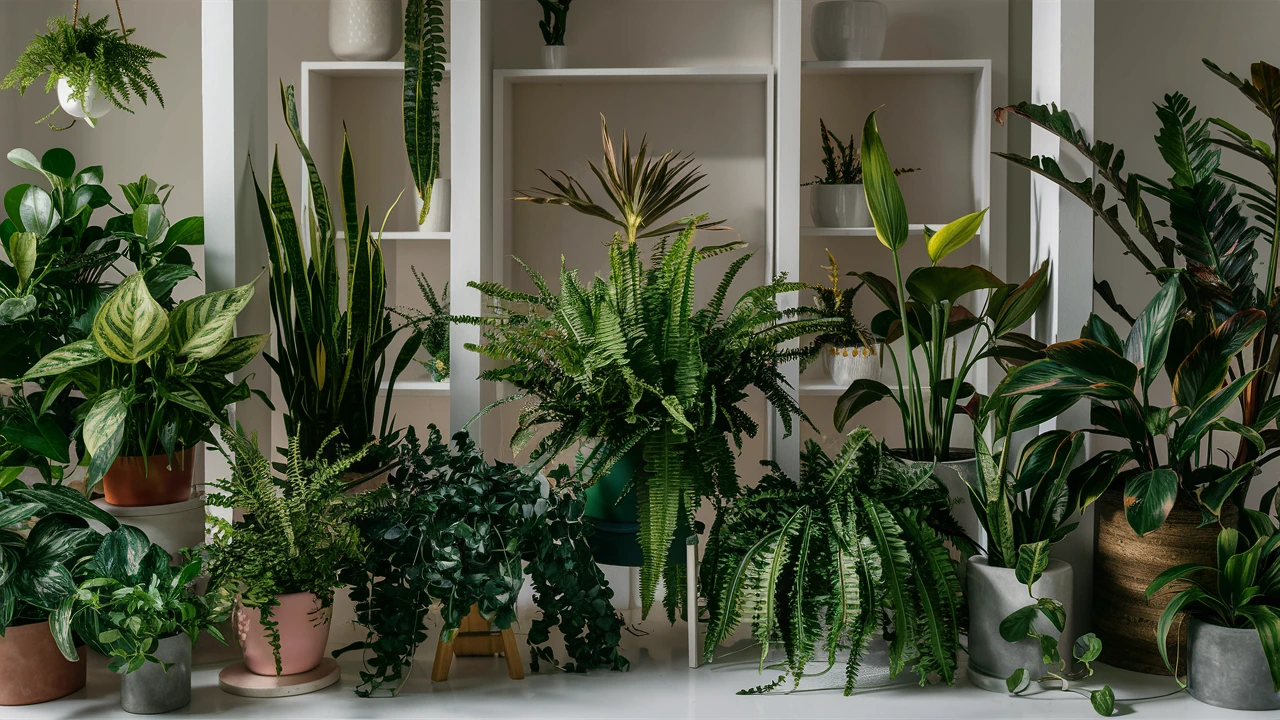
Indoor plants aren’t just about adding a touch of green to your living space—they can offer real benefits for your home and health. Did you know that certain plants help improve air quality and even combat mold?
Mold thrives in humid, poorly ventilated spaces, and can pose serious health risks. But with the right indoor greenery, you can naturally reduce mold levels while beautifying your home.
This blog will explore how plants create healthier indoor environments, what to look for in mold-controlling plants, and, most importantly, the 12 best indoor plants for mold prevention. Plus, we’ll share tips to place your plants for maximum effectiveness.
By the end of this post, you’ll be ready to greenify your home while keeping it mold-free!
How Plants Contribute to a Healthier Indoor Environment
Plants act as natural air purifiers, improving the overall quality of your indoor air. They achieve this by reducing airborne toxins and adding much-needed humidity balance to your space. But how does this help with mold control?
- Moisture Regulation: Certain plants absorb excess moisture from the air, reducing the kind of damp conditions where mold thrives.
- Air Purification: Many plants filter out impurities like mold spores and allergens, creating a cleaner environment.
- Natural Ventilation: Strategically placing plants can improve airflow in stagnant areas, reducing humidity pockets.
Best of all, these benefits come naturally without the need for harsh chemicals or expensive equipment.
What to Look for in Mold-Controlling Plants
Not all plants are equally effective at controlling mold. When selecting the best plants for this purpose, keep an eye out for these characteristics:
- Humidity-Absorbing Leaves: Plants that thrive in humid conditions are often good at pulling excess moisture out of the air.
- Air-Purification Abilities: Look for species known to reduce indoor toxins and pollutants.
- Ease of Care: A low-maintenance plant ensures its survival and effectiveness in your home.
- Size and Coverage: Larger or bushier plants cover more ground and have a greater impact on air quality.
With these traits in mind, here are 12 top plant picks to help keep your indoor environment healthy and mold-free.
The 12 Best Indoor Plants for Mold Control
1. Peace Lily (Spathiphyllum)
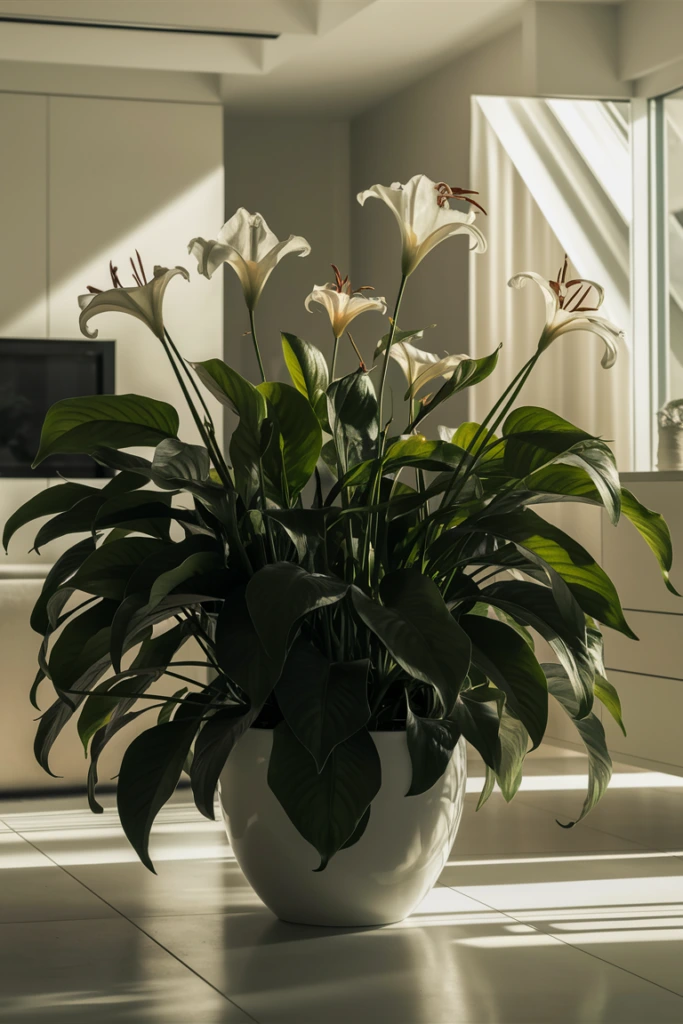
- Benefits: Famous for its air-purifying abilities, the Peace Lily not only absorbs harmful toxins like mold spores, benzene, and formaldehyde but also helps regulate indoor humidity by capturing moisture from the air. Its elegant white blooms make it a beautiful addition to any room.
- Care Tips: Thrives in low to medium light conditions, making it perfect for homes with limited natural light. Water only when the soil feels dry to the touch, as overwatering can lead to root rot. It’s a low-maintenance, stylish plant that works well in bedrooms and living rooms.
2. English Ivy (Hedera Helix)
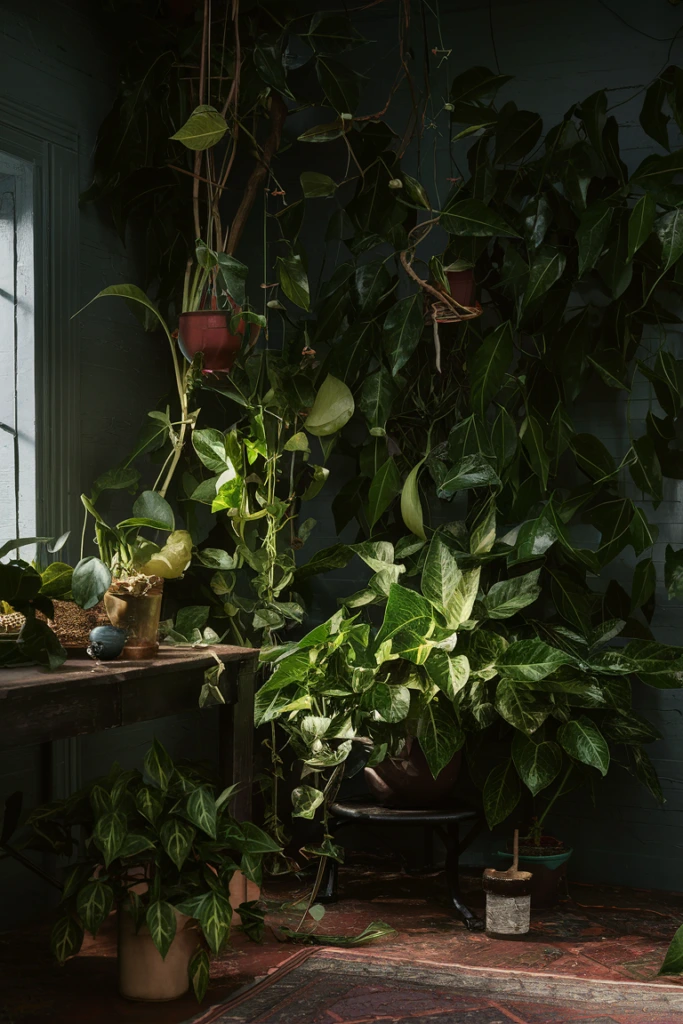
- Benefits: A top contender for air filtration, English Ivy absorbs airborne mold spores and moisture, making it ideal for bathrooms or damp areas. Its climbing vines also add a touch of greenery to walls or hanging baskets.
- Care Tips: Prefers indirect sunlight and moderate watering. Ensure proper drainage to avoid soggy soil and root rot. A hardy plant, it’s perfect for corners needing a pop of nature.
3. Boston Fern (Nephrolepis Exaltata)
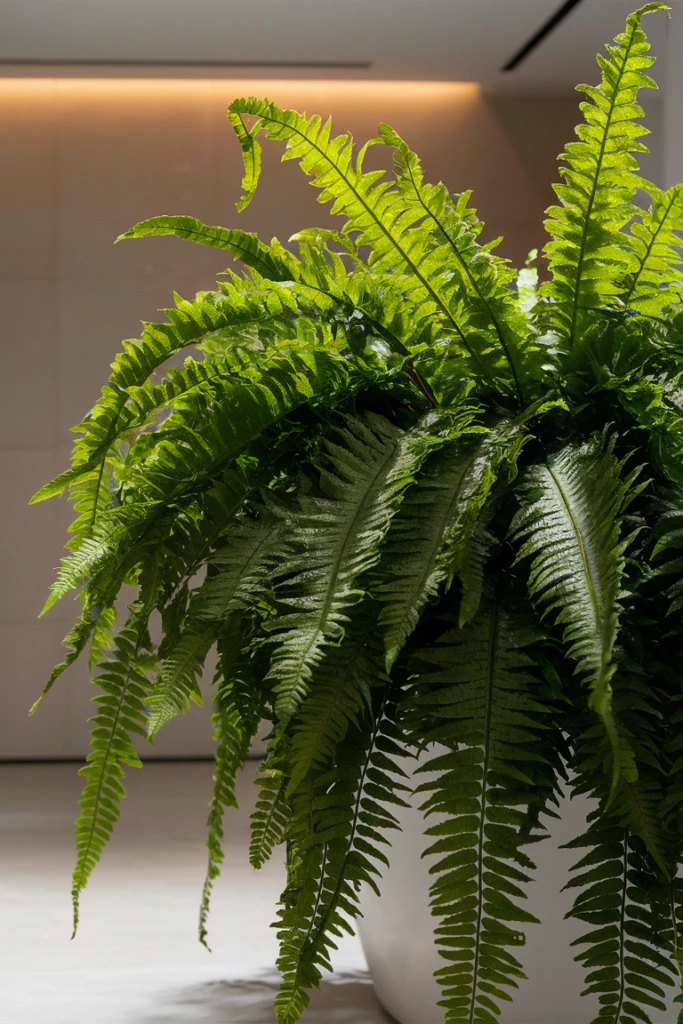
- Benefits: This vibrant, feathery fern not only adds texture to your space but also helps balance indoor humidity while filtering out mold spores and toxins. It’s particularly effective at creating a fresher atmosphere in high-humidity areas.
- Care Tips: Loves bright, indirect light and regular misting to keep its fronds lush and hydrated. Ensure the soil remains consistently moist but not waterlogged, as this plant thrives on humidity.
4. Snake Plant (Sansevieria trifasciata)

- Benefits: Also called “Mother-in-Law’s Tongue,” this hardy plant is nearly indestructible and works wonders as an air purifier. It’s excellent for combating excess indoor dampness, reducing mold growth, and improving air quality even at night by releasing oxygen.
- Care Tips: Requires minimal care—water sparingly and allow the soil to completely dry out between waterings. It tolerates both low and bright light, making it a versatile choice for any room.
5. Spider Plant (Chlorophytum comosum)

- Benefits: Known for its beginner-friendly nature, the Spider Plant is a powerhouse at removing airborne toxins like carbon monoxide and balancing indoor humidity, making it a favorite for mold prevention. Its cascading leaves also add a dynamic look to shelves or hanging pots.
- Care Tips: Thrives in indirect sunlight and prefers soil that’s lightly moist. Be careful not to overwater, as its roots are sensitive to sogginess.
6. Bamboo Palm (Chamaedorea seifrizii)

- Benefits: A tropical beauty, the Bamboo Palm not only enhances air circulation but also reduces humidity in damp spaces, minimizing the risk of mold growth. Its tall, elegant form makes it a standout decorative piece.
- Care Tips: Thrives in low light and requires weekly watering. Keep the soil moist but not soaking, and avoid direct sunlight to prevent leaf burn.
7. Aloe Vera
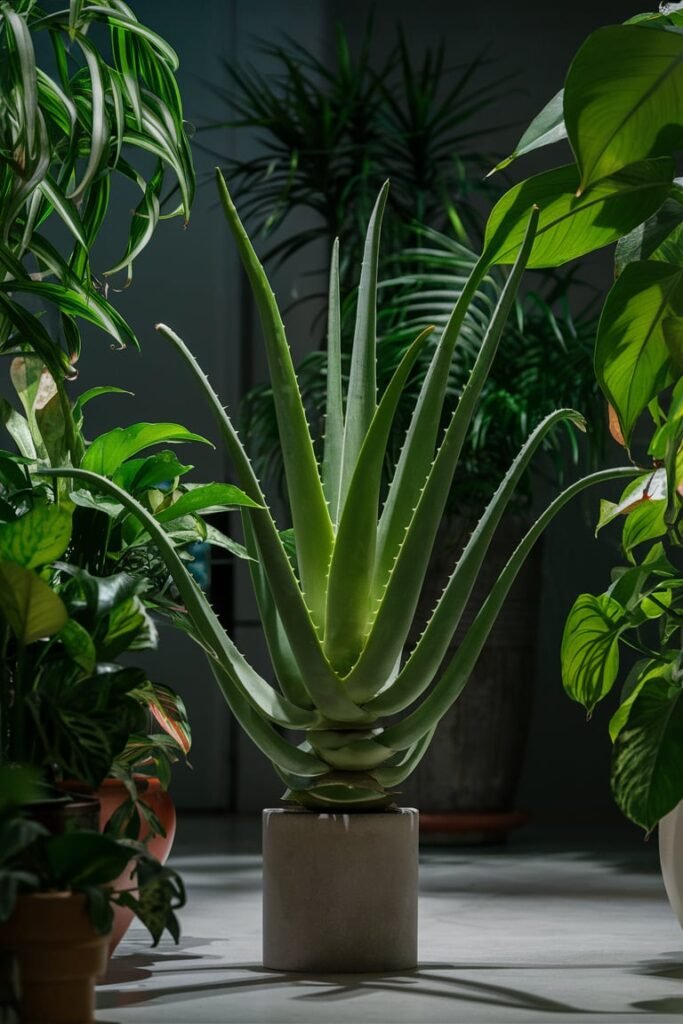
- Benefits: Beyond its well-known healing properties for burns and cuts, Aloe Vera is a fantastic plant for absorbing moisture and filtering out allergens and toxins from the air. Its compact size makes it perfect for desks or windowsills.
- Care Tips: Prefers bright, indirect sunlight and needs minimal watering. Allow the soil to dry out completely between waterings, as Aloe Vera stores water in its leaves.
8. Golden Pothos (Epipremnum aureum)
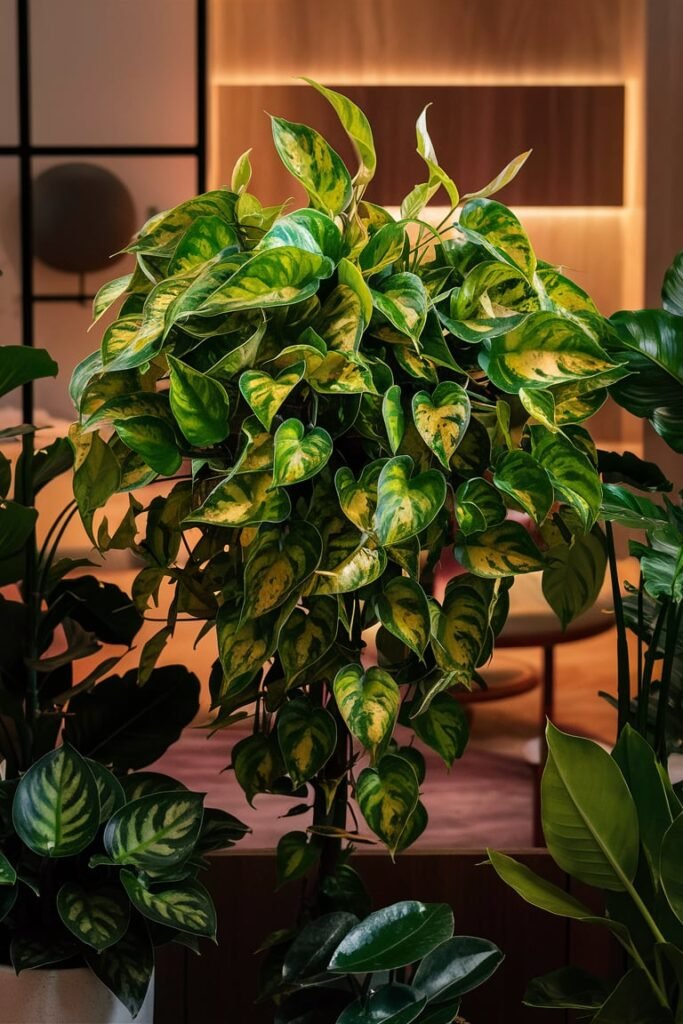
- Benefits: Nicknamed “Devil’s Ivy,” Golden Pothos is a resilient plant that thrives in almost any environment. It’s excellent at improving air quality, removing toxins, and managing humidity levels, making it ideal for basements or bathrooms prone to dampness.
- Care Tips: Requires very little attention—can grow in low light or bright indirect light. Water when the soil feels dry, but avoid letting it sit in water.
9. Areca Palm (Dypsis lutescens)

- Benefits: Often called the Butterfly Palm for its graceful, arching fronds, the Areca Palm adds a tropical vibe to your home while reducing indoor humidity and purifying the air. It’s great for creating a fresh, mold-free environment.
- Care Tips: Prefers bright, indirect light and needs regular watering to keep its fronds vibrant. Mist occasionally to maintain its lush appearance, especially in drier climates.
10. Lady Palm (Rhapis excelsa)
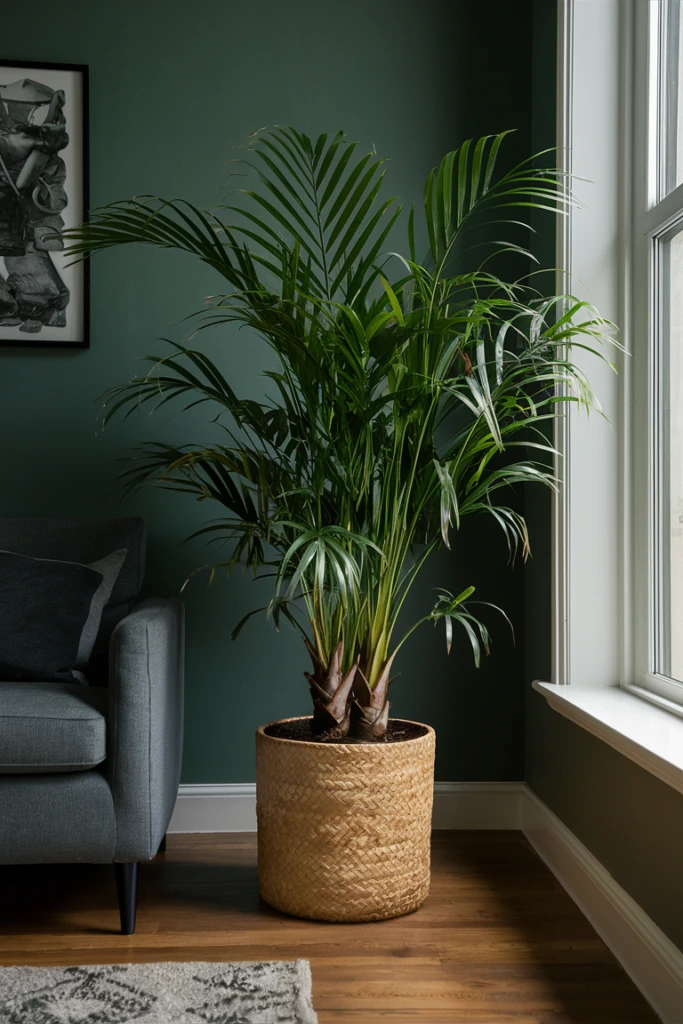
- Benefits: Known for its ability to filter toxins and inhibit mold growth, the Lady Palm is a sturdy, slow-growing plant that adds elegance to any indoor space while improving air quality.
- Care Tips: Thrives in indirect light and requires well-drained soil. Water regularly but ensure the pot allows excess water to escape to prevent overwatering.
11. Parlor Palm (Chamaedorea elegans)
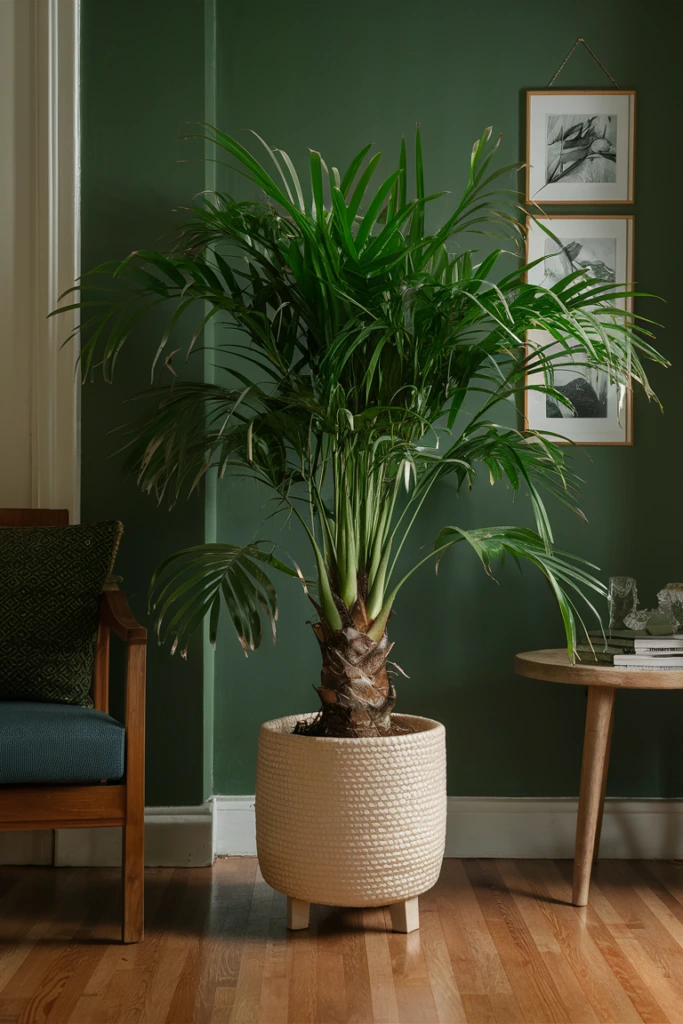
- Benefits: A compact, stylish option, the Parlor Palm is perfect for small spaces. It absorbs excess moisture in the air, helping to reduce mold and mildew, while adding a refined touch to your decor.
- Care Tips: Enjoys low light and only needs weekly watering. Be sure to keep its soil slightly moist but not soggy, and avoid placing it in direct sunlight.
12. Dracaena
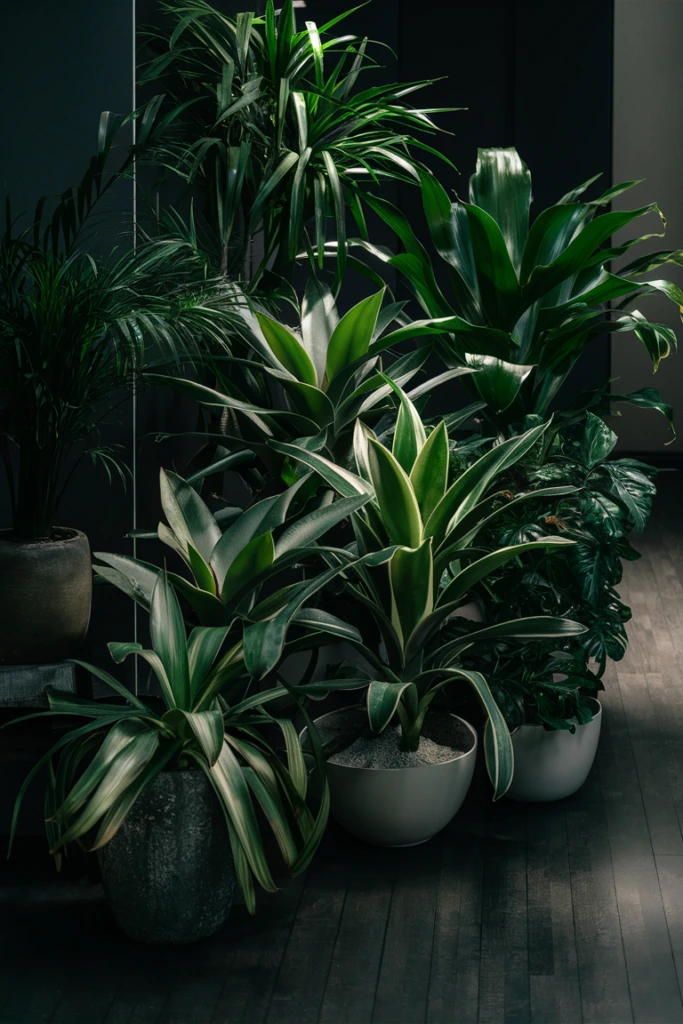
- Benefits: With its striking, sword-like leaves, Dracaena is both decorative and functional. It helps reduce indoor pollutants, including mold spores, while managing humidity levels in your home.
- Care Tips: Grows best in filtered light and prefers soil that’s kept moist but not overly wet. It’s a low-maintenance plant that adds a bold statement to any room.
Placement Tips for Optimizing Plant Effectiveness
Proper placement is critical to ensuring your plants effectively combat mold. Follow these tips to maximize their impact in your home:
- Focus on Humid Areas: Place plants in spaces prone to moisture, such as bathrooms, kitchens, basements, or near humidifiers.
- Avoid Overcrowding: Allow airflow around your plants to prevent stagnant air or excessive humidity buildup.
- Rotate Plants Occasionally: Shifting plant locations helps maintain consistent environmental benefits.
- Balance Light Exposure: Position plants where they can receive the recommended light levels, whether natural or artificial.
- Use Attractive Plant Stands: Elevating plants improves their air-purifying efficiency and adds to your home décor.
Transform Your Space with Mold-Fighting Plants
By incorporating the right indoor plants into your home, you can effortlessly improve air quality, reduce humidity, and minimize the risk of mold growth. From the hardy Snake Plant to the lush Boston Fern, these green companions do more than just look great—they actively contribute to a healthier living environment.
Start with a few plants and see the difference they make. For added style and function, pair them with decorative pots and stands that complement your home. With a little care, you’ll cultivate not only a mold-free space but also a thriving indoor oasis.
Are you ready to breathe easier and beautify your home? Choose your favorite mold-fighting plants today and enjoy the benefits of greener, cleaner air!
